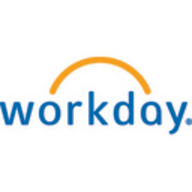

Microsoft Power BI and Workday Prism Analytics compete in the business intelligence and analytics space. Power BI generally has the upper hand due to its broader integration capabilities and familiarity across various industry applications, while Workday Prism Analytics is notable for its integration within Workday's ecosystem.
Features: Microsoft Power BI offers dynamic data visualization, the ability to create extensive dashboards, and strong integration with other Microsoft products. Workday Prism Analytics emphasizes enhanced data integration across Workday applications, enriched data preparation, and collaboration functionalities.
Room for Improvement: Power BI could improve its data modeling flexibility and ease of use for non-technical users. Integration with non-Microsoft ecosystems and advanced analytics capabilities can also be enhanced. Workday Prism Analytics could benefit from expanding its integration capabilities beyond Workday’s ecosystem. Furthermore, improving its user interface and reducing the complexity of data preparation and transformation would make it more accessible.
Ease of Deployment and Customer Service: Power BI offers streamlined deployment with both cloud and on-premises options supported by a comprehensive service infrastructure. Workday Prism Analytics provides cloud-based deployment, facilitating quick access to Workday-native analytics, which is particularly advantageous for organizations heavily using Workday solutions.
Pricing and ROI: Microsoft Power BI is known for its flexible pricing model, often resulting in a favorable ROI, especially for those utilizing Microsoft ecosystems. Workday Prism Analytics uses a more niche pricing approach, targeting enterprises invested in Workday systems. While this might involve higher initial costs, the ROI is justifiable for enterprises seeking deep insights within Workday infrastructures.


Microsoft Power BI is a powerful tool for data analysis and visualization. This tool stands out for its ability to merge and analyze data from various sources. Widely adopted across different industries and departments, Power BI is instrumental in creating visually appealing dashboards and generating insightful business intelligence reports. Its intuitive interface, robust visualization capabilities, and seamless integration with other Microsoft applications empower users to easily create interactive reports and gain valuable insights.
With Workday Prism Analytics, you can bring data in at scale from any source and prepare, analyze, and securely share it with your organization. The result? You gain all the insights you need to drive better business outcomes.
We monitor all BI (Business Intelligence) Tools reviews to prevent fraudulent reviews and keep review quality high. We do not post reviews by company employees or direct competitors. We validate each review for authenticity via cross-reference with LinkedIn, and personal follow-up with the reviewer when necessary.